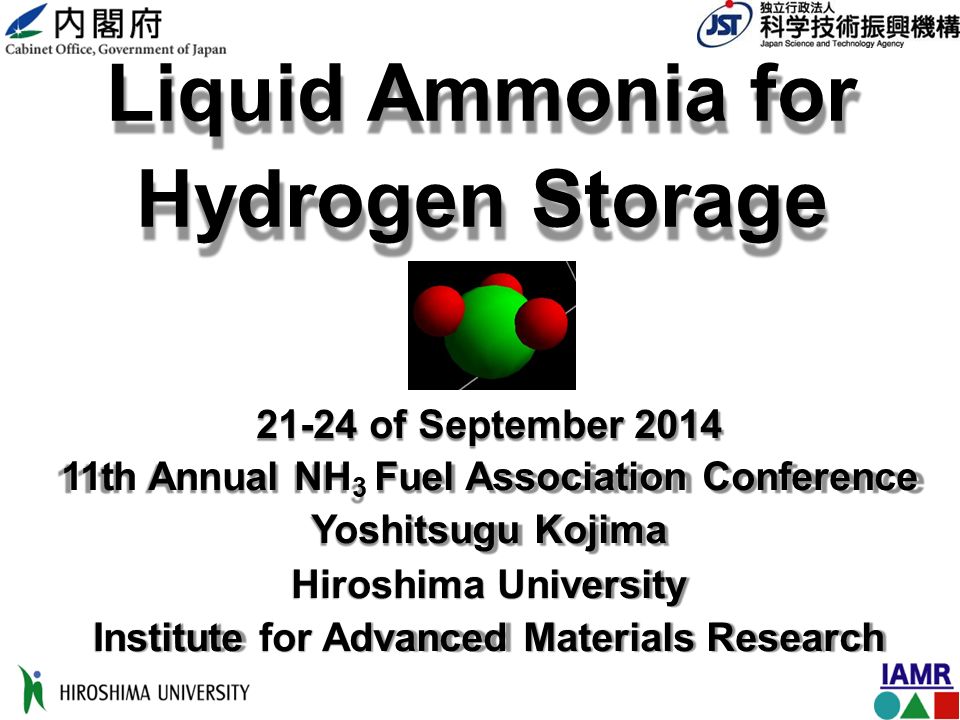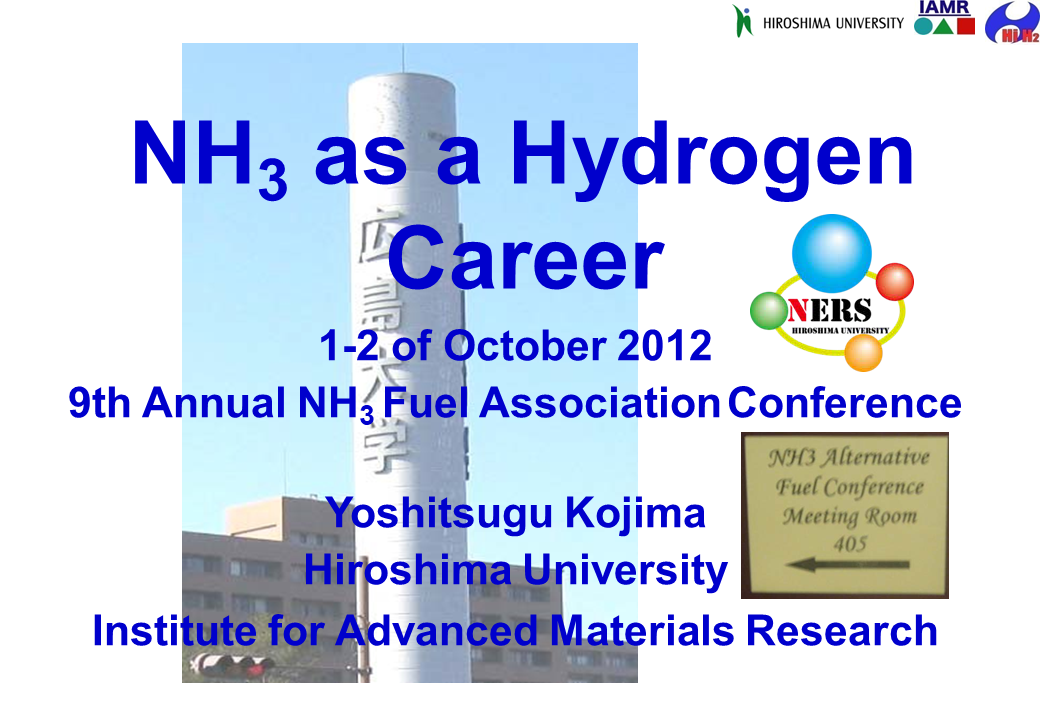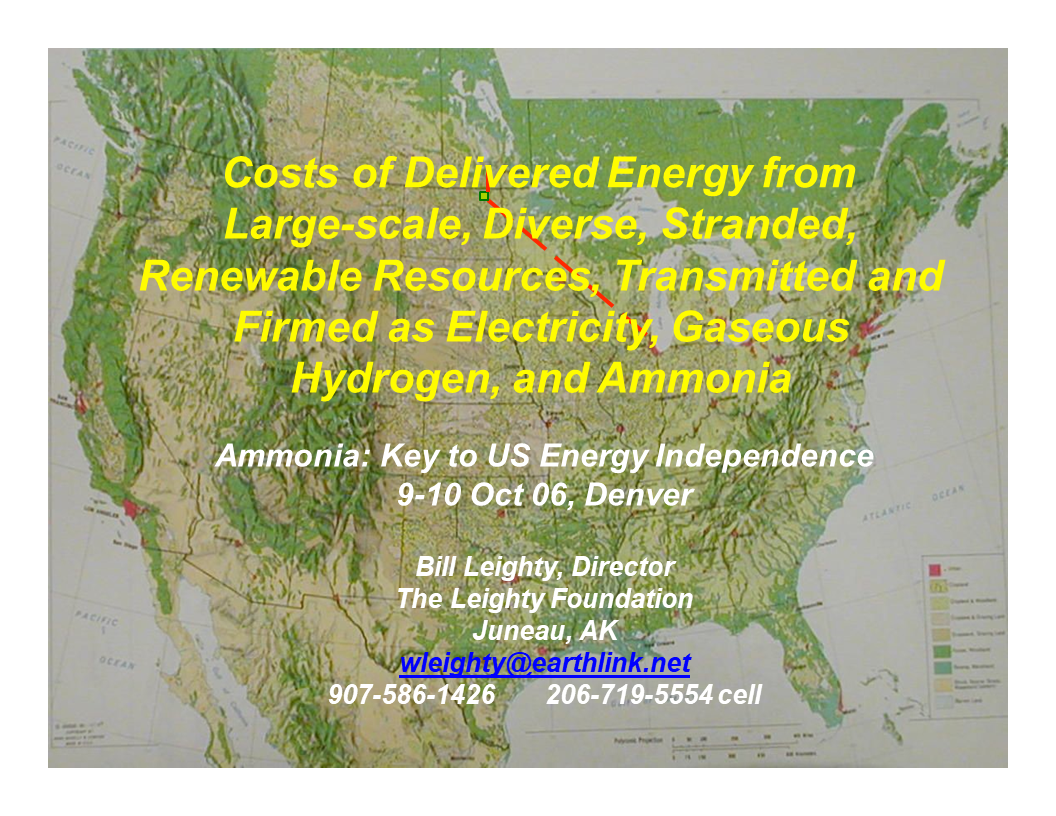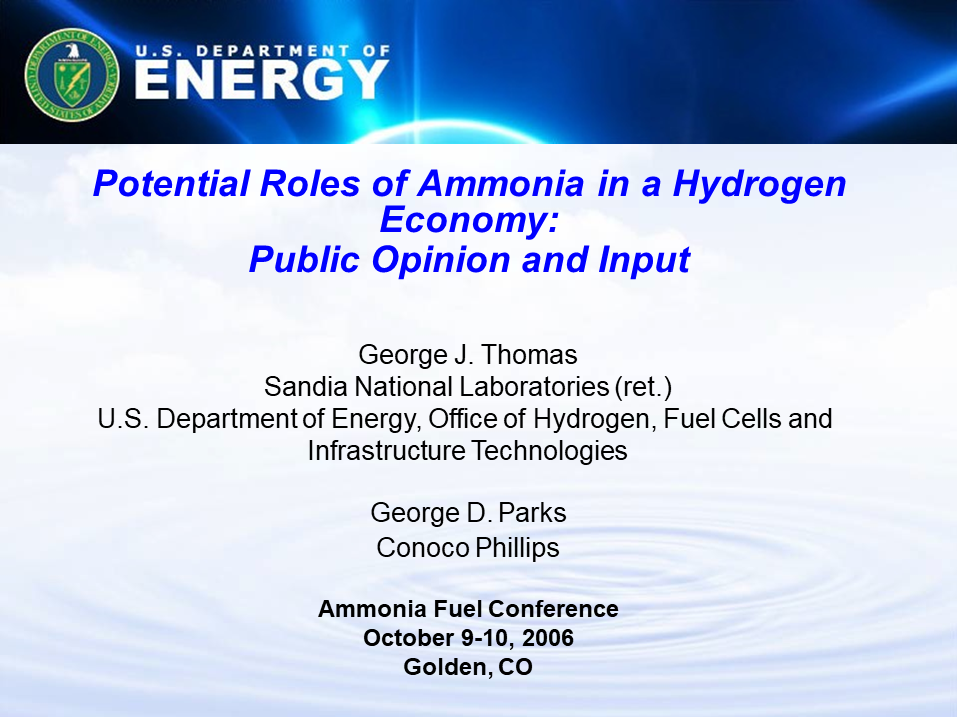Presentation
Liquid Ammonia for Hydrogen Storage
Hydrogen storage and transportation technology is essentially necessary to realize hydrogen economy. Hydrogen can be stored in many different forms, as compressed or liquefied hydrogen in tanks, or as hydrogen carriers: a hydrogen-absorbing alloy, metal hydrides with light elements, organic hydrides and carbon-based hydrogen storage materials. Among them, solid-state hydrides with light elements such as MgH2, Mg(BH4)2 and NH3BH3 possess high hydrogen capacity, 7-20 mass%, However, the practical volumetric H2 density is below 8 kgH2/100L because the packing ratio is down to 50%. Ammonia is easily liquefied by compression at 1 MPa and 25°C, and has a high volumetric hydrogen…





